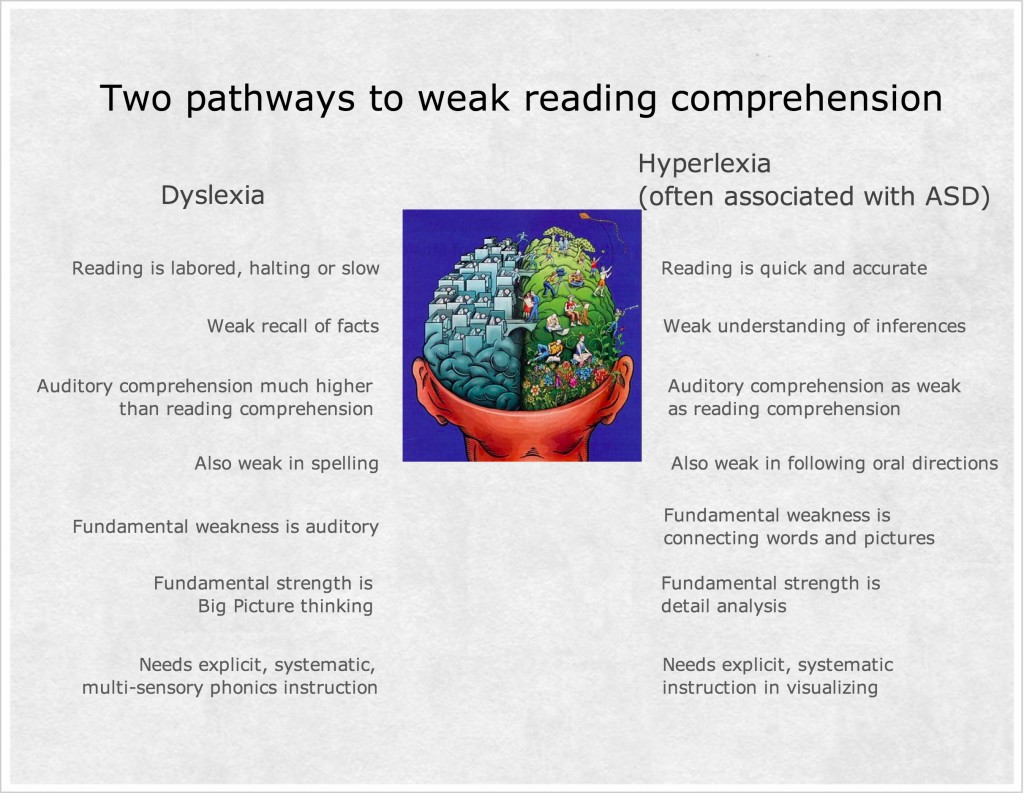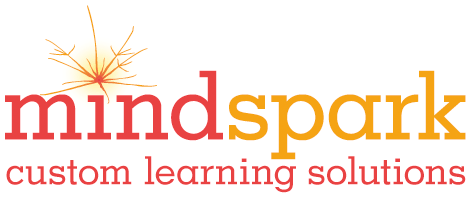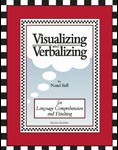Many of the kids who come to me have what I would refer to as garden-variety dyslexia. Bright, verbal kids you would expect to be reading voraciously and writing down all the great stories they love to tell, but who struggle to read or write fluently. The most common cause of these kiddo’s struggles is weak phonemic awareness (the ability to recognize, isolate and manipulate the smallest parts of speech, like the /c/ in cat). This weak phonemic awareness leads to weak phonics (the mapping of sound to print) and thus to weak reading and writing, especially spelling.
This blog post is not about those kids.
This blog post is about the kids who learn to read fine, but somehow still struggle to comprehend what they read. It’s about the kids who spell like a champ, but freak or freeze when asked to write, especially if asked to come up with their own ideas. While the former group of kids is referred to as having dyslexia, these kiddos have what is called hyperlexia: reading words really well, but without sufficient comprehension.
These kiddos often fly below the radar for years because they sound like such expert readers. They often picked up reading early and read–that is decode words–way above grade level. Listening to them, it is hard to believe there could be anything wrong. But start asking them comprehension questions, and they draw a blank. Ask them to make inferences about what they have read, and they are deer in the headlight.
Before you get frustrated with them and start nagging at them to pay more attention or try harder, realize that this is a pattern of strengths and weaknesses that, while not as common as dyslexia, is out there.
When you run across a kiddo with weak reading comprehension and you’re just not sure why, go through this checklist.
| Listen to her read. | Is the reading halting, slow or effortful? | Could indicate dyslexia |
| Is the reading automatic and easy? | Could indicate hyperlexia | |
| Read to him. | Does he understand much better than when he reads to himself? | Could indicate dyslexia |
| Is his comprehension just as weak whether he is reading to himself or being read to? | Could indicate hyperlexia | |
| Have her read nonsense words. | Does she have significantly more trouble with nonsense words than real words? | Could indicate dyslexia |
| Does she read the nonsense words with ease? | Could indicate hyperlexia | |
| Look at his spelling. | Is his spelling weak? | Could indicate dyslexia |
| Is his spelling strong? | Could indicate hyperlexia | |
| Ask her inference questions. | Is she able to make inferences from clues? | Could indicate dyslexia |
| Does she have trouble making inferences, insisting that she cannot know because the author didn’t say? | Could indicate hyperlexia | |
| Have him tell you a story. | Does he tell a coherent story with at least some details and an awareness of what you know and don’t know? | Could indicate dyslexia |
| Does he have trouble thinking of a story and/or assume you know what he knows so he doesn’t need to explain anything? | Could indicate hyperlexia | |
| Give her oral directions | Is she fairly good at following oral directions? | Could indicate dyslexia |
| Is she particularly weak at following oral directions? | Could indicate hyperlexia |
Obviously, some of these skills are developmental (a four-year old who assumes all the babysitters know each other is normal; a seventh graders who still assumes that, not so much). There may be other reasons for some of these weaknesses (difficulty following oral directions could indicate weak working memory or attention or auditory processing, or that you are talking to a teenager). But the pattern of strengths and weaknesses at least points you in the right direction.
So, what do you do if you have a student or a child who is, in fact, hyperlexic? The quintessential remediation for these kiddos is Lindamood Bell’s Visualize and Verbalize. V/V, as it is referred to by people in the know, was created to help build a bridge between a student’s language processing area and a student’s visual imaging area, roughly corresponding to the left and the right hemispheres. It is the difficulty translating words into what Lindamood Bell calls “an imaged gestalt” that accounts for a person with hyperlexia’s unique pattern of strengths and weaknesses.
While a student with dyslexia may have trouble gleaning meaning from text because the act of decoding is taking up too much of the processing power in the brain, a student with hyperlexia reads the words with ease, but has difficulty connecting them to the meaningful images or pictures in their mind. The words stay words on a page and are never transformed into the movie in our head that those of us who love reading enjoy. Comprehension stays behind on the page with so many words.
When you have a student or child with weak comprehension and it just doesn’t seem to fit because she “reads so well,” take a look at the overarching pattern of strengths and weaknesses. It isn’t lack of attention or effort, and if it isn’t lack of decoding skills, then it may be that the child needs help, not connecting sound to print, but connecting words to meaning.
*Diana Kennedy and MindSpark is NOT Lindamood-Bell Learning Processes nor is it affiliated with, certified, endorsed, licensed, monitored or sponsored by Lindamood-Bell, Nanci Bell, Phyllis Lindamood or Pat Lindamood. Lindamood-Bell – an international organization creating and implementing unique instructional methods and programs for quality intervention to advance language and literacy skills – in no way endorses or monitors the services provided by MindSpark or Diana Kennedy.
copyright Diana Kennedy 2014






Great article. Thanks. Can you comment on eyetracking as a possible cause?. e.g The kid can decode very well and move from word to word very slowly, but is cognitively overloaded by the effort of eyetracking that comprehension goes out the window.
Absolutely. Although I would also look at working memory, ADHD and expressive langugae. If you give the CTOPP, you’ll get info on their phonemic awareness and processing, as well as their rapid naming. If their rapid naming is low, then that indicates processing speed, which could indicate either ADHD or expressive language. There are a handful of tests that look at memory. In either case, to really tease out ehat is happening, you’d have to do a neuropsych. But eye tracking and eye teaming can definitely make matters worse. See if big, sans serif print helps. The Ann Arbor tracking workbooks can help, and if it is severe, a behavioral or developmental optometrist can help work on the eyes portion. Just remember that teading itself can be remediation for tracking.
An interesting article. I would like to add my take on this. Diana mentioned the word ‘Freeze’ and ‘deer in headlights’. This would indicate a ‘survival’ response which is back brain activity. Describing my work and understanding within this context, a child or adult with this challenge would immediately indicate to me that the back brain and especially the frontal lobes, where comprehension skills take place, are not sufficiently neurologically connected.
I specialise in helping to make these neurological connections using specific movements. When this has taken place sufficiently, comprehension skills are accessible to the individual and the challenge disappears quickly. I have seen this so many times and makes profound changes that are life changing and life-long. It is so important to have the neurological connections in place for so many learning challenges to be helped. The two movement based programmes that make these changes are Brain Gym and Rhythmic Movement Training. My website http://www.braindevelopment.co.uk explains development.
I am somewhat familiar with Brain Gym, but not with Rhythmic Movement Training. I know there are powerful connections between movement and the brain, although the last time I looked into it, the research was a bit ambivalent about the effect.
No one has done enough peer-reviewed research on Brain Gym or RMT probably because of the cost. Both programmes and organisations are non-profit making. The practitioners all over the world who use these movement based programmes help facilitate change in people and see amazing results.
As you said, movement, especially infant movements during the first year of life is when the neurological foundations are laid down throughout the brain. If the infant cannot or is not able to move freely, for which there are several reasons why this may happen, then this vital time is hindered and the brain can remain at a lower level of neural development. Once the infant is up on two feet and walking, the amount of stimulation the brain needs is different and the linking up isn’t as effective. The foundations are so important during the Early Years.
If the linking up of the areas of the brain are weak, then various learning challenges will show. This is where Brain Gym and RMT can help using developmental movements to create and/or strengthen the neural pathways throughout the brain to help overcome most learning challenges. The results are natural and life-long.
The best way to understand the tremendous benefits these two programmes can achieve and what can be improved is to experience it for yourself either through a one to one session with a qualified practitioner or to go on a course. Reading articles just isn’t enough to really understand how the brain develops through movement and yet without movement the brain won’t develop sufficiently.
amazing~! can you make this printable?
In theory, yes…in practical terms, um…how does one do that?
Yes! Now how do I help my son learn comprehension? My 20 yo son, who just happens to have Down Syndrome, was diagnosed with Hyperlexia when he was about 8 years old (prior to the ADD diagnosis and the ASD one). By 6th grade he was reading strongly at the 4th grade level but testing at K6 (I’m assuming due to the comprehension issues). I figured out once that he was reading words only when he was reading me a passage that had one sentence ending with the same words the next sentence began and he said, “Mommy they messed up and put the same words in twice.” That was a lightbulb moment for me as I realized he was reading the words but not the sentences as a whole. He still enjoys reading but his comprehension is still quite low. Would love some ideas to help him see the picture in his mind when he reads the words. (We have switch to getting him more graphic novel type books as he has the pictures to go with the words.)
V/V would be great for him. In summary, it is a structured program that takes students through describing a picture to describing the picture in their head based on a very simple paragraph, to longer and more complex paragraphs. They use what they call “structure words” to help, well, structure the kids’ thinking about their mental picture: what, size, color, number, shape, where, movement, mood, background, perspective, when, and sound. They also have the teacher ask forced questions, using gestures, if the kids are having trouble filling in details: “Is the dog big or small? Short hair or long hair?” etc. There is obviously a lot more detail to it, but this would be enough to get you started in an informal way. You can also follow the link to their web site, where they offer professional development as well as books that are pretty user friendly. Good luck!
I am tutoring a child with autism that seems to fit this pattern. Would the Lindamood-Bell be appropriate for an autistic child?
Absolutely. Children with autism are one of the groups they have researched, and it has proven to be effective at rewiring the brain, more or less. http://www.lindamoodbell.com/learning-centers/asd/
Excellent and informative article.